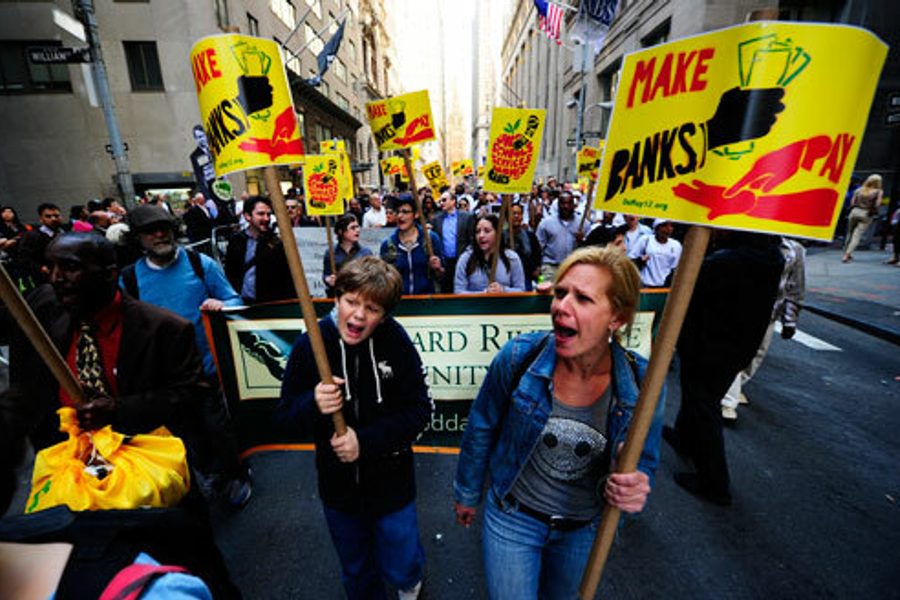
At the end of each week, Working In These Times rounds up labor news we’ve missed during the past week, with a focus on new and ongoing campaigns and protests. For all our other headlines from this week, go here.
—On Thursday, 15,000 protesters from eight separate marches converged on Wall Street to demand that the rich pay their fair share of taxes. Corporate profits are skyrocketing while public budgets are stretched to the breaking point. One of the catalysts for the protest was Mayor Mike Bloomberg’s budget plan, which would lay off over 4000 teachers. The demonstrators urged New York Gov. Andrew Cuomo to reinstate a millionaire’s tax worth $4.6 billion a year.
—Activists in San Francisco kicked off a city-wide campaign against wage theft on Thursday. Wage theft is a $30 billion problem nationwide, and especially pervasive in the hospitality and construction industries. The San Francisco Board of Supervisers is considering legislation to help prevent wage theft in the city.
—For many students, summer jobs are a source of income and work experience. However, the poorest students have the hardest time finding summer jobs and racial disparities are rampant, according to an analysis by the Economic Policy Institute. In 2009, only 20 percent of low-income African Americans aged 16-19 and not enrolled in school were employed, compared to 31 percent of poor Hispanic teens and 36 percent of poor white teens. Among middle-class teens of the same age, employment rates were 55 percent for whites, 56 percent for Hispanics, and 40 percent for African Americans.
—National Nurses United celebrated the 191st anniversary of the birth of Florence Nightingale, the founder of the modern profession of nursing. During the Crimean War, Nightengale led the first recorded nurses strike, refusing to allow her nurses to disembark from a ship until the hospitals were in working order. Nigthingale also made original contributions to epidemiological statistics.







